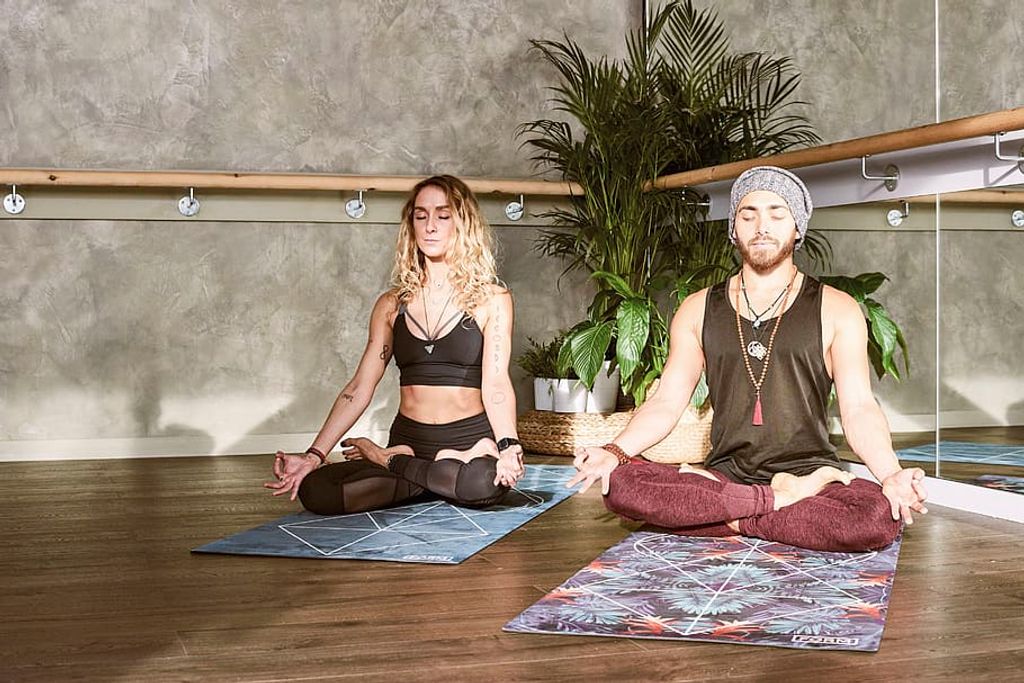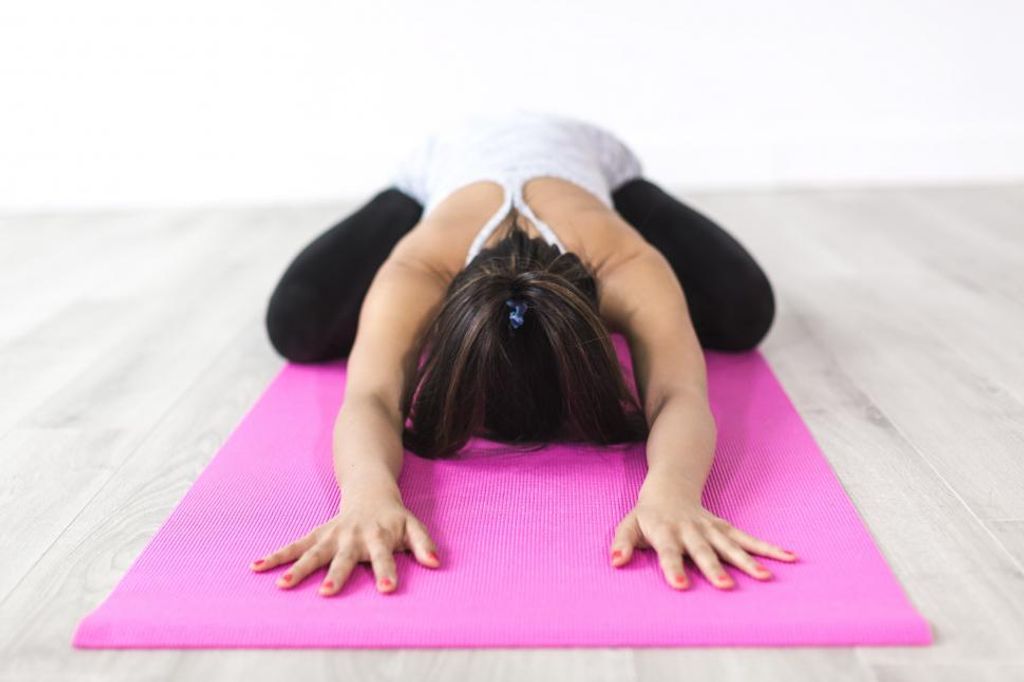
How to Properly Clean Your Yoga Mat for a Hygienic Workout
Maintaining a clean yoga mat is essential for a hygienic and effective workout. Not only does a clean mat contribute to your overall health, but it also enhances your yoga practice by providing a safe and comfortable surface. In this article, we will explore the importance of a clean yoga mat, different cleaning techniques, natural solutions, maintenance tips, and proper drying and storage methods to ensure your yoga mat stays fresh and ready for use.
Key Takeaways
- Regularly cleaning your yoga mat is crucial for maintaining hygiene and preventing the spread of bacteria and germs.
- Different types of yoga mats require specific cleaning methods based on their materials and manufacturer's instructions.
- Daily wipe-downs and deep cleaning after intense sessions are essential for keeping your yoga mat clean and free from odor.
- Natural cleaning solutions, such as DIY yoga mat sprays and essential oils, are effective for disinfection and maintaining a pleasant aroma.
- Proper drying and storage techniques help prevent mold and mildew, extending the lifespan of your yoga mat and ensuring its freshness.
Understanding the Importance of a Clean Yoga Mat
The Link Between Hygiene and Your Health
Maintaining a clean yoga mat is not just about aesthetics; it's a critical aspect of your overall health. Hygiene plays a pivotal role in preventing the spread of bacteria and infections, which can be easily transferred through sweat and skin contact during your practice. Regular cleaning eliminates these risks, ensuring a safer workout environment.
Yoga mats can harbor a multitude of microorganisms that may lead to skin infections, athlete's foot, and other health issues if not properly sanitized. It's essential to understand that the cleanliness of your mat directly impacts your well-being.
Tip: Always use a fresh towel or yoga mat cover for an additional layer of hygiene.
By incorporating simple cleaning routines, you can significantly reduce the potential for illness and enhance the quality of your yoga experience.
How a Dirty Mat Affects Your Yoga Practice
A dirty yoga mat can significantly impact your practice, leading to reduced grip, increased risk of bacterial infections, and compromised stability during poses. The accumulation of dirt and sweat can also affect the overall hygiene of your practice space, creating an unpleasant environment for your workouts. Regular cleaning and maintenance are essential to ensure a safe and hygienic yoga experience. It's important to address mat cleanliness as a fundamental aspect of your yoga routine, promoting both physical and mental well-being.
Identifying the Type of Your Yoga Mat
Material Matters: Different Cleaning Methods for Different Mats
The type of material your yoga mat is made from dictates the best way to clean it. PVC mats, for example, can handle more vigorous scrubbing and harsher cleaners, while natural rubber or cotton mats require gentler, more natural solutions to avoid degradation.
- PVC Mats: Can be cleaned with soap and water or a mild disinfectant.
- Rubber Mats: Best cleaned with a gentle, non-oil-based soap and water.
- Cotton Mats: Should be hand-washed with a mild detergent and cold water.
- Jute Mats: Clean with cold water and mild soap, avoiding soaking.
Tip: Always perform a spot test on a small, inconspicuous area of your mat before applying any cleaning solution over its entire surface to ensure that the material does not react negatively.
Remember that the frequency of cleaning will also vary depending on the material. While PVC mats can be wiped down after every use without much wear, natural materials may require less frequent but more careful cleaning to maintain their integrity and grip.
The Manufacturer’s Instructions: Your First Reference
When following the manufacturer's instructions for cleaning your yoga mat, it's important to pay attention to the specific guidelines provided. These instructions may include details about the recommended cleaning products, techniques, and frequency. Additionally, they may highlight any specific precautions or warnings to consider. It's crucial to adhere to these instructions to ensure the longevity and performance of your yoga mat.
Remember to check for any specific cleaning solutions or methods recommended by the manufacturer. This could include the use of gentle cleaners, mild detergents, or natural solutions. Following these recommendations can help maintain the integrity of the mat's material and prevent damage.
If the manufacturer provides specific cleaning frequency guidelines, it's advisable to follow them diligently. Regular cleaning and maintenance can contribute to a hygienic yoga practice and extend the lifespan of your yoga mat.
Tip: Always refer to the manufacturer's instructions as the primary source of guidance for cleaning and maintaining your yoga mat. Following these guidelines can help preserve the quality and hygiene of your mat for years to come.
Daily and Post-Practice Cleaning Techniques
Quick Wipe-Downs: Keeping Bacteria at Bay
When it comes to quick wipe-downs, it's essential to use a gentle yet effective cleaning solution. A simple mixture of water and mild soap can do wonders in removing surface dirt and bacteria. For a more thorough clean, consider using a natural disinfectant spray with antimicrobial properties. Remember, consistency is key in maintaining a hygienic yoga mat.
Deep Cleaning After Intense Sessions
After a particularly grueling yoga session, your mat deserves more than just a quick wipe. A deep clean can help restore its grip, eliminate odors, and ensure a hygienic surface for your next practice. Start by preparing a cleaning solution of warm water and a gentle, non-oily soap. Use a soft cloth to scrub the mat, paying extra attention to areas where your hands and feet frequently make contact.
For textured mats, a soft-bristled brush can be used to get into the nooks and crannies. However, be careful not to damage the material. Once you've thoroughly cleaned the surface, rinse the mat with clean water to remove any soap residue.
Tip: Always avoid soaking your yoga mat, as this can degrade the material and affect its structure.
Finally, roll out the mat and let it air dry completely before rolling it back up. This is crucial to prevent any mold or mildew from forming. If possible, hang the mat over a railing or a shower rod to ensure even drying on both sides.
Natural Cleaning Solutions for Your Yoga Mat
DIY Yoga Mat Sprays: Simple Recipes
When it comes to cleaning your yoga mat, natural DIY sprays are a popular choice. These sprays are often made with gentle ingredients like witch hazel, distilled water, and a blend of cleansing and calming essential oils. They offer an effective and eco-friendly way to keep your mat clean and fresh. For a simple recipe, mix witch hazel, distilled water, and essential oils in a spray bottle. Shake well before each use to ensure the ingredients are properly blended. Consider using a calming essential oil like lavender or chamomile for a relaxing aroma during your practice. Remember to test the spray on a small area of your mat first to ensure compatibility with the material.
The Power of Essential Oils for Disinfection and Aroma
Essential oils are not only celebrated for their aromatic qualities but also for their disinfecting properties, making them a superb choice for natural yoga mat cleaning solutions. When selecting oils, consider those with natural antibacterial, antiviral, and antifungal properties to ensure a thorough cleanse.
Tea tree oil is a popular choice due to its broad-spectrum antimicrobial actions. Similarly, lavender oil offers a calming scent along with mild disinfectant qualities. For a refreshing and invigorating aroma, consider adding a few drops of lemon or eucalyptus oil to your cleaning mix.
Tip: Always dilute essential oils in water or a carrier oil before applying to your mat to avoid damage and ensure even distribution.
Here's a simple recipe for a DIY yoga mat spray:
- 3/4 cup of distilled water
- 1/4 cup of witch hazel or white vinegar
- 10-15 drops of your preferred essential oil blend
Combine the ingredients in a spray bottle, shake well, and spritz lightly on your mat before wiping it down with a clean cloth. This natural solution not only cleanses your mat but also enhances your yoga experience with therapeutic scents.
The Do's and Don'ts of Yoga Mat Maintenance
Common Cleaning Mistakes to Avoid
When it comes to maintaining your yoga mat, it's crucial to avoid common mistakes that can lead to damage. For instance, drying the mat in direct sunlight, scrubbing too hard, and using harsh chemicals can all have detrimental effects. Instead, opt for gentle cleaning methods and natural solutions to preserve the integrity of your mat. Regular cleaning and care are essential for prolonging the lifespan of your yoga mat and ensuring a hygienic workout environment.
Best Practices for Longevity and Performance
When it comes to maintaining your yoga mat for longevity and optimal performance, it's important to follow a few key guidelines. Consistent and gentle cleaning is essential to prevent the buildup of dirt and bacteria. Additionally, proper storage and regular inspection can help extend the lifespan of your mat. Here are some important tips to keep in mind:
- Avoid using harsh chemicals or abrasive scrubbing tools, as these can damage the material and affect the mat's texture.
- Always air dry your mat thoroughly before rolling it up for storage to prevent moisture-related issues.
- Consider using a mild, natural soap or a specialized yoga mat cleaner to maintain the integrity of the material.
Remember, a well-maintained yoga mat not only enhances your practice but also contributes to a hygienic workout environment.
Drying and Storing Your Yoga Mat Post-Cleaning
Proper Drying Techniques to Prevent Mold and Mildew
After cleaning your yoga mat, it is crucial to ensure proper drying to prevent the growth of mold and mildew. Drying your mat thoroughly before storing it away is essential for maintaining its hygiene and longevity. This can be achieved by laying the mat flat in a well-ventilated area, away from direct sunlight. Additionally, you can use a clean towel to gently absorb excess moisture from the mat's surface. Allowing the mat to air dry completely is important to prevent the accumulation of bacteria and fungi. Remember, a dry mat is a clean mat!
Storage Solutions to Keep Your Mat Fresh and Ready
After cleaning your yoga mat, it's essential to store it properly to maintain its freshness and readiness for your next practice. One effective way to store your mat is by rolling it up and placing it in a ventilated area. This allows air to circulate around the mat, preventing moisture buildup and potential mold growth. Another option is to use a dedicated yoga mat bag or holder to keep your mat protected and easily accessible. Remember to avoid storing your mat in damp or dark spaces, as this can lead to unpleasant odors and bacterial growth. Proper storage is key to ensuring your yoga mat stays clean and in good condition for a long time.
After cleaning your yoga mat, it's important to ensure proper drying and storage to maintain its quality and longevity. At Yune Yoga, we understand the significance of caring for your yoga mat post-cleaning. Our range of non-slip and eco-friendly yoga mats are designed to provide both functionality and style. Additionally, our yoga towels and straps are the perfect accessories to complement your yoga and exercise routine. Visit Yune Yoga today to explore our collection of yoga mats and fitness accessories, and take your yoga practice to the next level.
Conclusion
In conclusion, maintaining a clean yoga mat is essential for a hygienic workout. By following the proper cleaning methods, you can ensure that your yoga mat remains free from bacteria and odors, providing a safe and comfortable surface for your practice. Remember to regularly clean your yoga mat to prolong its lifespan and maintain a healthy workout environment.
Frequently Asked Questions
How often should I clean my yoga mat?
It is recommended to clean your yoga mat after every practice session to maintain hygiene and prevent the buildup of bacteria and odors.
Can I use regular household cleaners on my yoga mat?
It is best to avoid using harsh household cleaners as they may degrade the material of the yoga mat. Opt for gentle, natural cleaning solutions instead.
Is it safe to use essential oils to clean my yoga mat?
Yes, essential oils can be used to disinfect and add a pleasant aroma to your yoga mat. However, it is important to dilute the essential oils properly to prevent any skin irritation.
How should I store my yoga mat after cleaning?
After cleaning, ensure that the yoga mat is completely dry before rolling it up. Store it in a cool, dry place away from direct sunlight to prevent mold and mildew growth.
Can I machine wash my yoga mat?
It is not recommended to machine wash most yoga mats as the agitation and heat can damage the material. Refer to the manufacturer's instructions for the best cleaning method.
What are the signs that indicate my yoga mat needs deep cleaning?
If your yoga mat has a persistent odor, visible dirt or sweat stains, or feels slippery during practice, it is time for a deep cleaning to restore its freshness and grip.


